Sam Zabel is suffering from a terminal case of writer’s block. He also thinks, not without reason, that he is a talentless hack churning out inferior versions of late Golden Age superhero comics to the strangely obliging masses. If only he was as accepting of his lot as the other hacks who have prospered mightily at the offices of Marvel and DC; if only he was able to earn a living doing comics like Pickle, one time home of that classic of alternative comics, Hicksville.
The panacea to this obstruction, that pill for renewed creativity (as in Hicksville), is other comics. The “magic pen” of the title is merely an excuse to explore and retread (selectively) the history of comics—from the innocent sexism of the non-superhero golden age to the somewhat more sexually liberated climes of an all-female pirate comic (a kind of Paradise Island with eye patches and peg legs). Mayhem, fight scenes, and assorted lessons on creativity are all offered up with a sense of harmless fun and deference to easy readability.
The conceit here is that a number of comics of differing vintages and genres have been drawn with a magic pen. These comics if given the breath of life draw the reader into them, allowing them to inhabit their fantasy worlds. Zabel finds just such a comic in a used book shop, unattended and unloved but seemingly placed there for the singular purpose of reinvigorating his person and artistry. By tale’s end, we are gently apprised—as with all fantasies about the creation of art—that all pens are magic and we need only put them to paper to concoct these “inhabitable” worlds.
Horrocks seems as eager as Scott McCloud once was to syncretize and reconcile the comics form with the long history of art itself. In one of the final scenes in the book, the protagonists of his tale are brought back to the “the beginning”; to the first pen, a finger dipped in red ochre doodling on a cave wall and hand stencils produced by spitting pigments on to an outstretched hand—all this as it once was in places like Cueva de El Castillo and Chauvet cave.
Horrocks affection for the comics form is well known but Sam Zabel also reveals his boundless passion for the naked female body. The first world that Zabel gets sucked into is that of a comic called, The King of Mars —a kind of third-rate Barsoom where the inhabitants are expecting a god king-creator. As such, they quickly latch on to Zabel as the most likely suspect. The women here are all green and sex-starved. To some this will seem unexpected and liberating, to others almost interminable in its execution. And while opinions can differ, there is something to be said for the idea that “less is more.”
But this too might be part of Horrock’s divine plan, that jumble of suffocating nakedness being a metaphor for the excess that extinguishes creativity. A pity then that the nudity here is so unalluring, so lacking in temptation and passion. Seldom have so many naked women been deployed in the service of a comic so thoroughly unerotic.
All of this is a function of Horrock’s far greater gifts as a writer than as an artist. In Horrock’s survey of the exquisite prurience of pre-Code comics, his almost unvarying line and its distinct lack of sensuality is a very great handicap. At one point in the comic, Horrocks does appear to be attempting a different style…
…which gives the reader some hope that a Jungle Girl will appear with all the skill of the illustrators of old (or at least the crudely rushed pen work of the early Sheena) but this is not to be. Horrocks doesn’t have the ability to emulate the line of an Alex Raymond or even an Iger Studio artist. Nor is this the kind of bravura display of cartooning where one might expect to find “normal” characters inhabiting the worlds of a Fletcher Hanks; which means that any sense of mystery or delight in the archaic remnants of a different age rest solely in the minds of the reader. While Horrocks attempts to emulate the compositions and use of negative space of rough drawn horror manga classics, Miki (Zabel’s Japanese school girl guide through the “magic pen” comics) is never quite convincing; she will never look like that cross between Sailor Moon, Doraemon and Astro Boy which she is supposed to be.
The fantasy worlds of the comics Zabel is drawn into are as flat and unexciting as the dumpster truck he finds himself in when ejected from those worlds. If an “eyeball” seems like an interesting mode of interplanetary transportation, its actual deployment on the page leaves something to be desired. One need only compare the fertile world building creativity found in the likes of the reinvented Prophet comic or Farel Dalrymple’s Wrenchies to notice the lamentable gap in accomplishment.
While Sam Zabel and the Magic Pen works on a certain level as a reassuring tale of a mid-life crisis expunged, it also creates a simplistic notions of right and wrong fantasies, or at least divisions between fantasies which are generally safe and those which are dangerous.
In this schemata, the John Carter-Buck Rogers-Flash Gordon fantasies of old are of the generally harmless variety while the hentai worshiping otakus are not to be trusted—and are perhaps even to be blasted into a reformed Jungle Girl comic to get their asses whipped. It is an easy formulation since it conforms to popular taste and morality in such matters. It is the hentai otaku who hides his wares on a subway train and not the fan reading Edgar Rice Burroughs. I suspect that most people would much rather be caught reading A Princess of Mars on the train then the tentacle rape fantasies of Hokusai and Kuniyoshi.
At one point in the comics, Horrocks presents one of the foundations of his comic, that…
“even a comic book can shape the real world, contributing to the culture, encouraging attitudes and assumptions…”
Not for Horrocks then are notions that we are all predestined products of familial and genetic destiny. How art actually shapes culture and attitudes is, however, altogether less certain and barely broached in the pages of the comic; all we can gather on this issue from Horrocks is incidental and second hand. Suffice to say that the villain of the tale is a cartoonist who has tipped pages of his deranged rape (?) fantasies into several more sedate and juvenile manga. He is, in other words, a sociopathic sexual deviant the likes of which we see every other week on American primetime TV.
Which leads one to wonder which ideas have the greatest influence—the sexual fantasies of a marginalized group of readers or the vastly more popular works of the golden age of pulp; the embarrassing sexual fetishes of a select few or the John Carter stories of the 21st century —like this one, which makes plain the colonial template upon which the Martian fantasies were based.
Sam Zabel and the Magic Pen could be described as a post-modern, vaguely autobiographical meta-comic, but it also remains safely conventional —I suspect more by accident than through any concerted planning. Thus the exoticization of manga—the short skirts, school girl uniforms, panty shots, and general deviance – is less the result of xenophobia then of simply reaching for the easiest examples at hand. The effortless rehabilitation of the sexist Kiwi cartoonist of the early twentieth century is contrasted with the irredeemable villainy of the hentai reader and fantasist simply because every story needs an explosive climax and a moral. Horrocks challenge to this easy equation is that Sam Zabel and the Magic Pen is a veritable hentai comic in itself, a phallic object with a PG-13 label—innumerable pairs of naked breasts are on display but only one dick-sucking scene as far as I can tell.
It seems that a sizable number of white male confessionals of this modern age tend to lead back to Portnoy’s Complaint—that “disorder in which strongly-felt ethical and altruistic impulses are perpetually warring with extreme sexual longings, often of a perverse nature.” The impotency of Philip Roth’s protagonist is replaced by Zabel’s writer’s block. We can add to this the defiant sexuality often of an embarrassing nature (if one considers fantasies about fucking several Orion slave girls at once to be embarrassing) and other assorted masturbatory revelations. There are no prostitutes in the comic but cradle snatching is elevated to its preeminent place in our great sequential art form. All this mixed in with a few snippets on the artistic impulse and various ethical considerations.
The main difference would appear to be that where Portnoy remains self-pityingly pathetic, Zabel finally gets to reunite with his family. Where “Portnoy” gets to write a famous novel, Zabel/Horrocks finally has a new long form comic after years of silence. After all, isn’t this the way all pulp fantasies end—happily ever after?
_______
Further Reading
From an interview at Paste Magainze:
“The central question, in a way, is asked out loud by Sam halfway through: “Do we bear a moral responsibility for our fantasies?” The book sets out to have a conversation about that question.”
“I’m totally fascinated by wish fulfillment fantasies: how they work; their strange familiar contours; the weird mix of yearning, pleasure, embarrassment and shame we feel about them; what happens when they become “property” — a franchise or brand. Obviously, that’s a big part of the history and landscape of comics, but I think it’s also an underrated element in so-called “literary fiction” and “serious” art.The Magic Pen gave me an opportunity to unpack some of my own ambivalence about wish-fulfillment fantasies, but it also helped me find my way back to their power and joy.”
“The big shift for me was to stop giving myself such a hard time about my work. I had spent years feeling very uncomfortable with my drawing, because it was so clumsy and inept. I tried to draw like other people; the first issue of Atlas (Drawn & Quarterly, 2001) is full of my attempts to draw like Edmond Baudoin, Blutch, Tibor Gergely and other artists I admire. But it’s kind of a mess. The reality is, I can’t draw like other people, I can only draw like me. Luckily, no one else can draw exactly the way I do, either.”

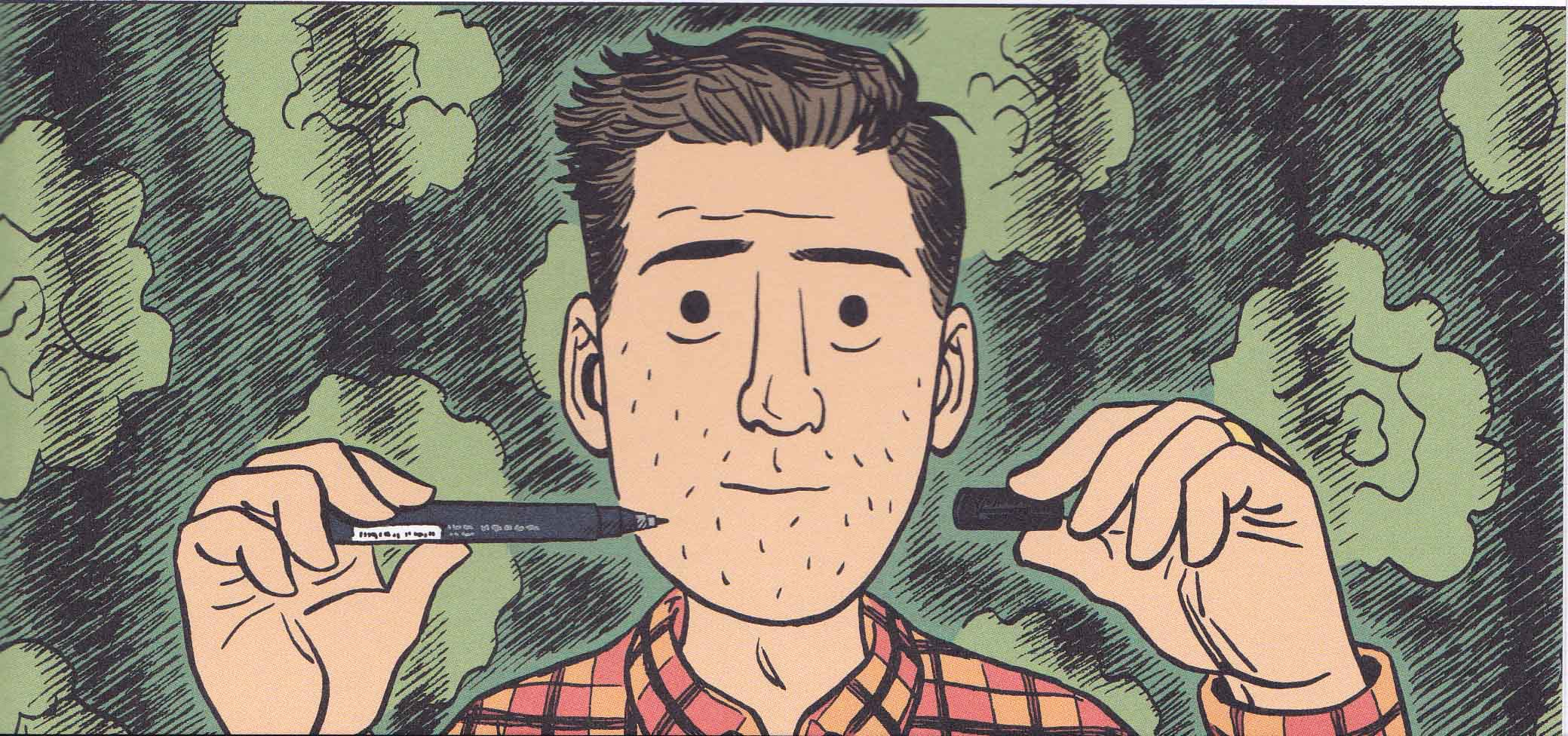
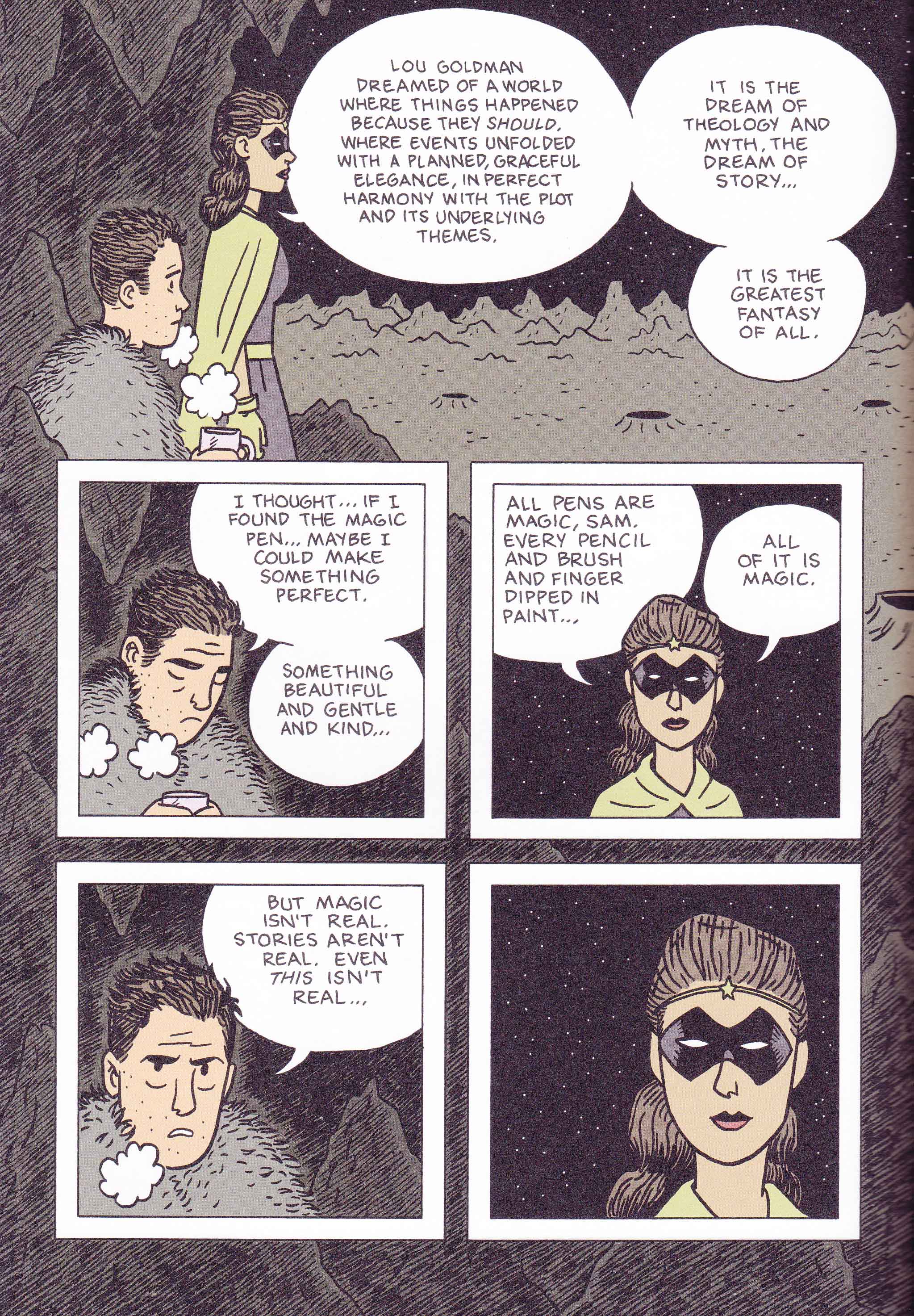
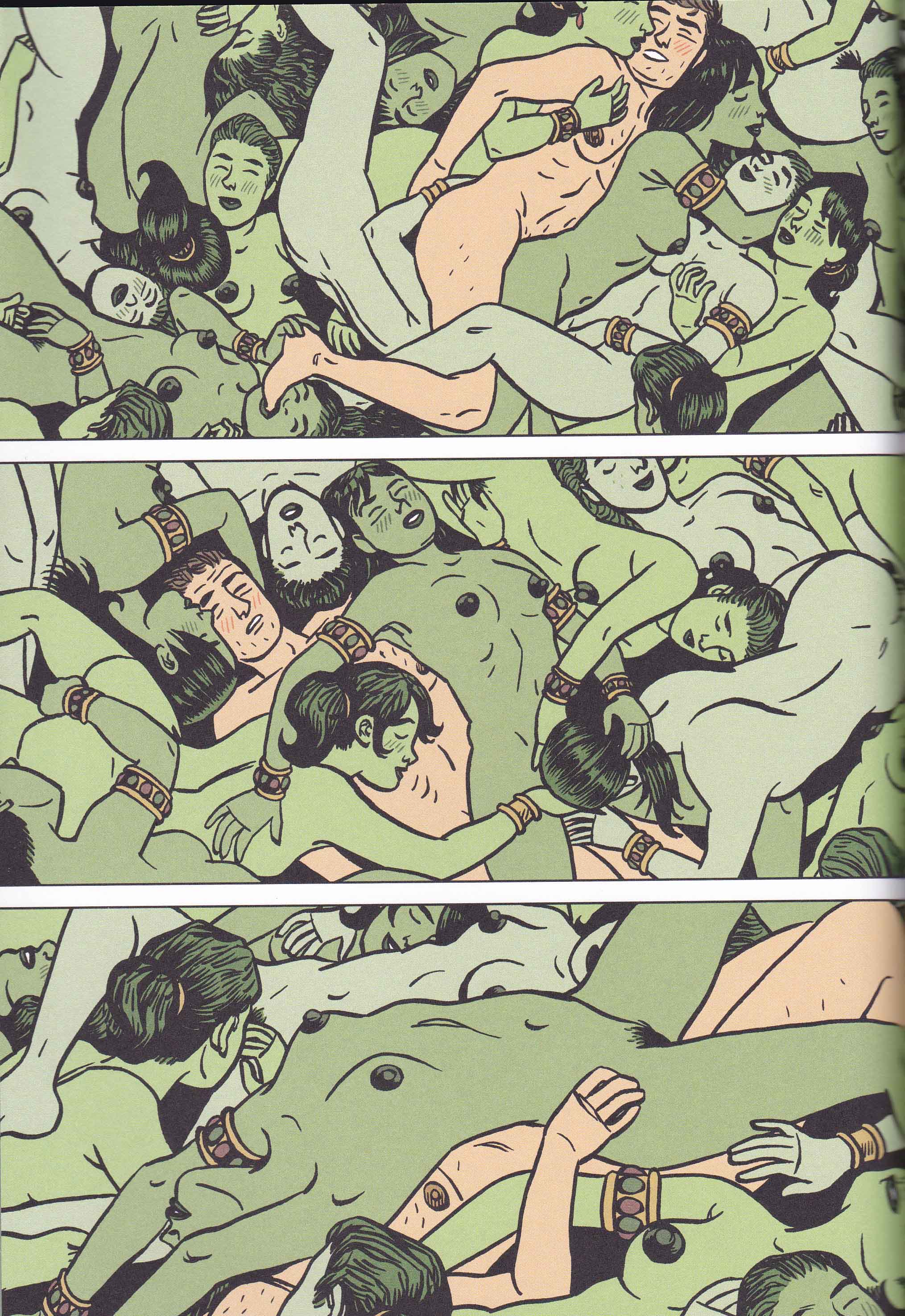
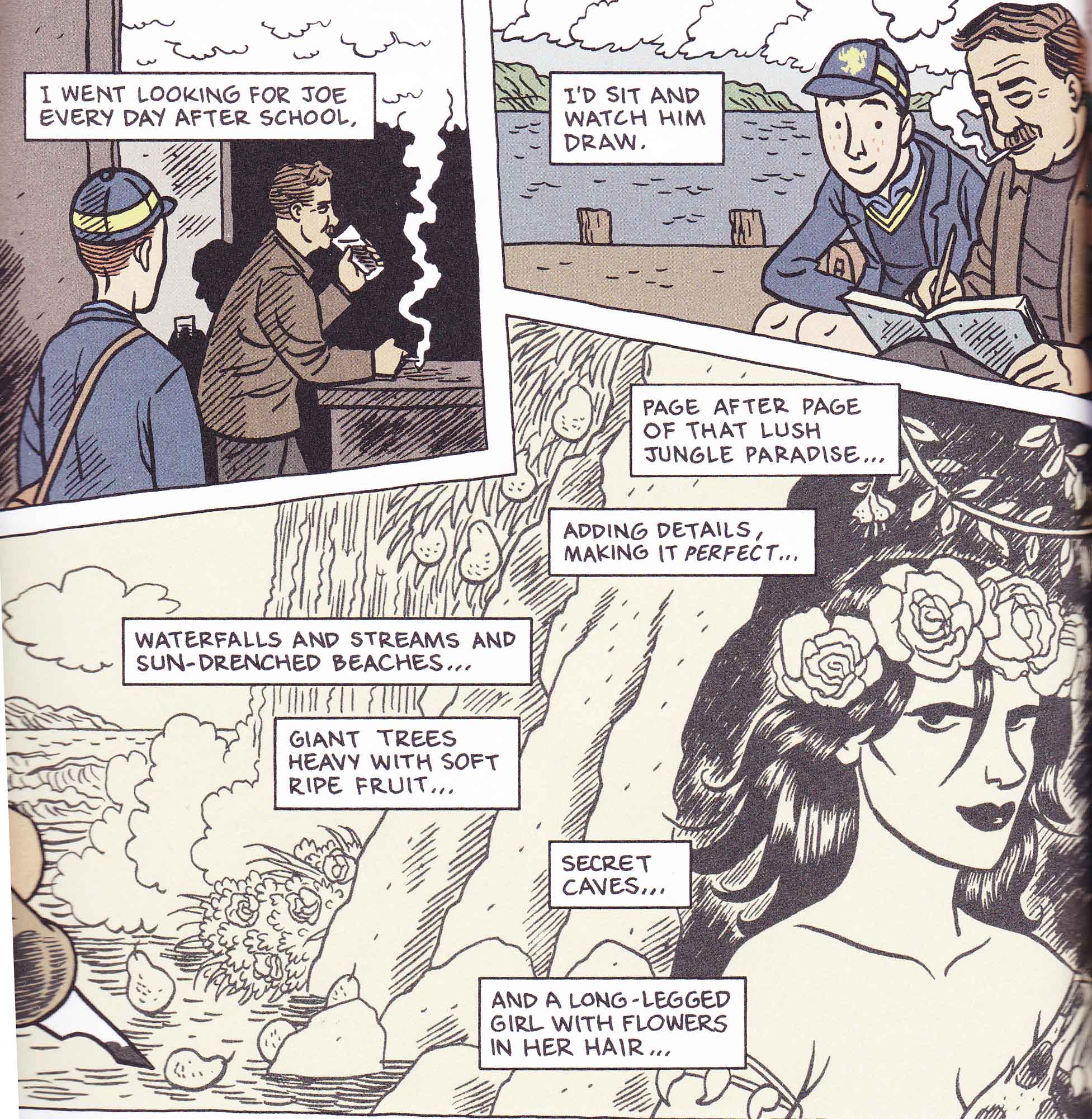
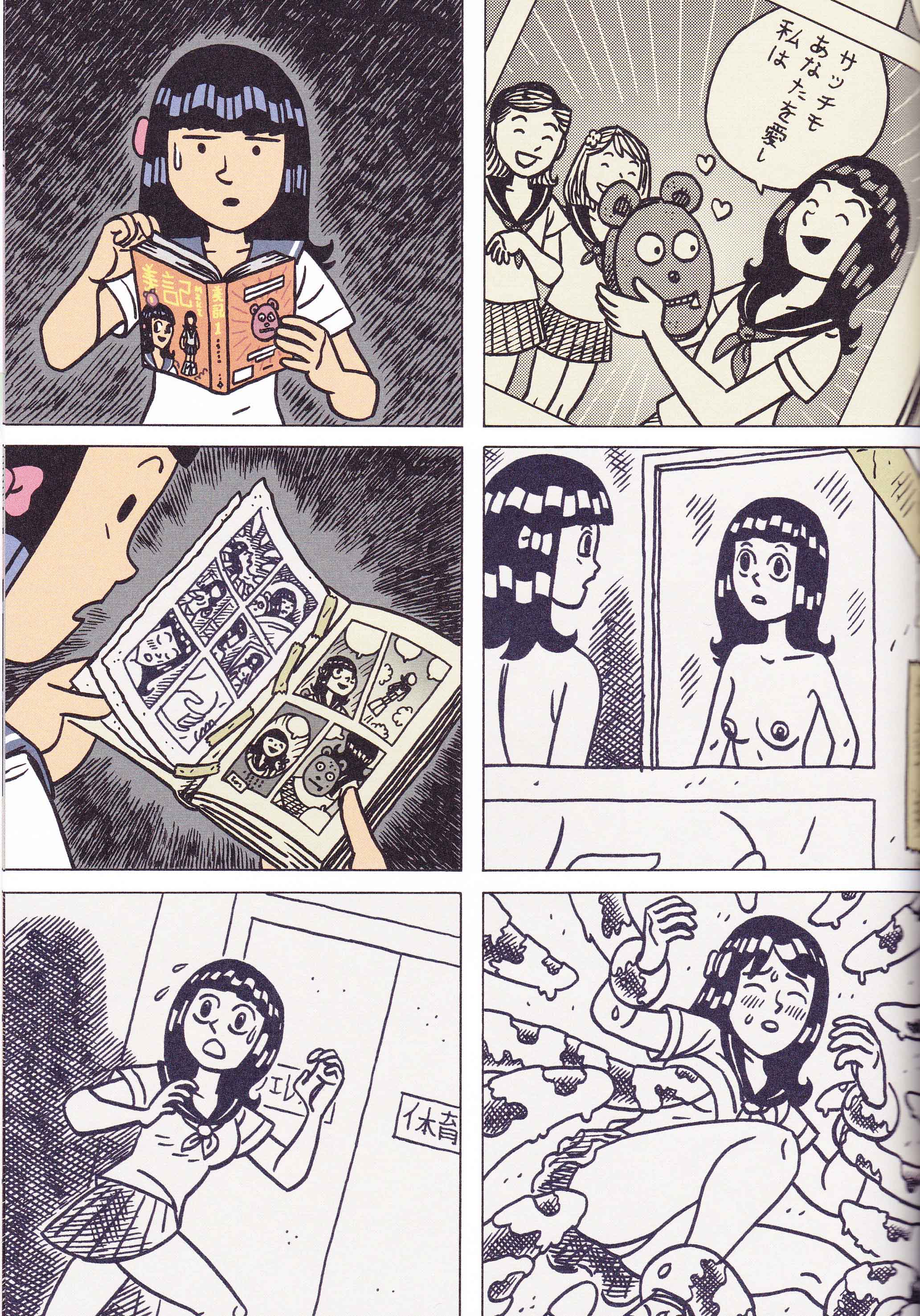

I think the slave-girl scenes are kinda hot but those girls don’t seem to really care about the protagonist, he’s just kind of there while they all get it on with each other.
This comic seems lazy.
I guess it’s a writer’s block comic – do something-anything to get out of the block. Even if it means writing about the block and your weekly fantasies.
The slave girl thing goes on at length in the comic and they really care about the author in other parts. I think they’ve all been f—ed to death by the time the image reproduced above occurs. And lesbian slave girls are even better than normal slave girls in this genre I think.
“Sam Zabel is suffering from a terminal case of writer’s block”
The best 100 artworks about artist’s block:
1. Barton Fink
2. um….